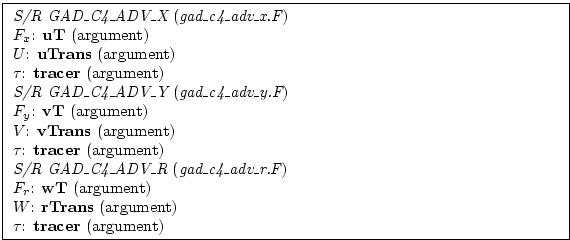 |
 |
|||||||||||
 |
|
|||||||||||
 |
 |
|||||||||||
|
Next: 2.16.4 First order upwind Up: 2.16 Linear advection schemes Previous: 2.16.2 Third order upwind Contents 2.16.3 Centered fourth order advectionCentered fourth order advection is formally the most accurate scheme we have implemented and can be used to great effect in high resolution simulation where dynamical scales are well resolved. However, the scheme is noisy like the centered second order method and so must be used with some finite amount of diffusion. Bi-harmonic is recommended since it is more scale selective and less likely to diffuse away the well resolved gradient the fourth order scheme worked so hard to create.
The centered fourth order fluxes are discretized:
As for the third order scheme, the best discretization near boundaries
is under investigation but currently
Next: 2.16.4 First order upwind Up: 2.16 Linear advection schemes Previous: 2.16.2 Third order upwind Contents mitgcm-support@dev.mitgcm.org |
|||||||||||||||







